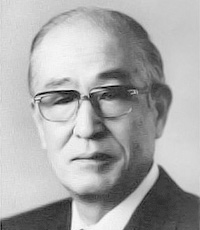Japanese Pioneers
Hisayoshi Yanai

Hisayoshi Yanai was born in 1920. He graduated from the Electrical Engineering Department in the First Faculty of Technology at Tokyo Imperial University in 1942, and then became a lecturer in the same department. In 1947 he was appointed an assistant professor at the University of Tokyo, where he obtained a doctorate in 1953. In 1960, he was appointed a professor at that university. The American Institute of Electrical and Electronics Engineers awarded a fellowship to Yanai in 1977, and this was followed by the Award of the International Symposium on Gallium Arsenide and the Heinrich Welker Medal in 1980. On retiring from his professorship at the University of Tokyo in 1981, he was invited to the Shibaura Institute of Technology as a professor. He received the Verdienstmedaille (Medal for Merit) and Großes Verdienstkreuz (Commander’s Cross) from the Federal Republic of Germany in 1985. He was awarded the Medal with Blue Ribbon and became president of the Shibaura Institute of Technology in 1986. He then became an honorary professor of the institute in 1991. He received the Order of the Rising Sun (third class) in 1994.
While we can’t call his encounter with transistors early, because he didn’t start work in this field until his appointment as a professor at the University of Tokyo in 1960, he explored and studied the new academic field that is now called semiconductor electronics while the development of transistor technology was still in its early stages. He played an important role in teaching electronic engineering to many students and in promoting joint research by industry, government, and academia.
In the analytical characterization of the bipolar transistor, his first work specifically on transistors, he succeeded in parameterizing the admittance in accord with the intensity of the electric field within the base region. This achievement was significant in establishing the theory of transistor operation and is quoted in numerous textbooks. His research into semiconductor electronics engineering covered a broad range, with an initial focus on semiconductors for work with microwaves and a later focus on semiconductor devices for ultra-high-frequency waves. His selection of semiconductor materials also ranged from germanium and silicon to compound semiconductors such as gallium arsenide. His research on Schottky-gate field-effect transistors and Gunn effect devices for digital applications earned him a world-wide reputation.


